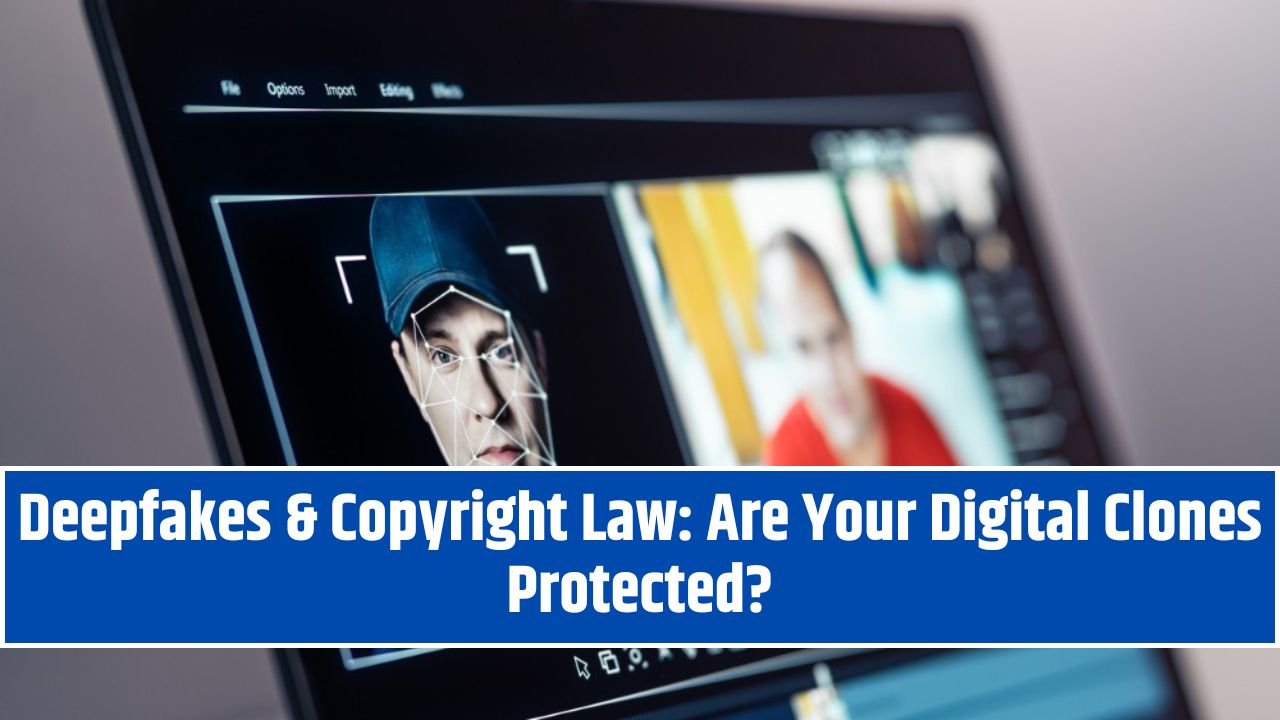Imagine waking up one day, scrolling through your phone, and—bam—there you are…
Saying things you never said.
Wearing clothes you don’t own.
Maybe doing something wildly inappropriate or weirdly impressive.
But it’s not actually you.
It’s a deepfake—a digital clone so convincing even your mom had to watch it twice.
Now here’s the million-dollar question:
Who owns that version of you?
And if someone else made it… do you have any rights over it?
Welcome to the strange, fast-evolving, ethically wobbly world of deepfakes and copyright law. Buckle in. It’s messy, confusing, and 100% relevant if you’ve got a face, voice, or online presence.
First, What the Heck Is a Deepfake?
In simple terms:
A deepfake is synthetic media—videos, images, or audio—made using AI and deep learning to mimic a real person’s likeness or voice.
You’ve seen them:
- Elon Musk endorsing scammy crypto on TikTok? Deepfake.
- Morgan Freeman “saying” something profound he never said? Deepfake.
- Your friend turning into Harry Styles on Reels? Yep. Deepfake filter.
At their most innocent, they’re hilarious. At their worst? Deepfakes can:
- Spread misinformation
- Ruin reputations
- Commit identity theft
- Cause real-world harm
But the scariest part? Most legal systems still don’t know how to handle them.
The Big Legal Dilemma: Who Owns a Deepfake?
Let’s unpack the legal side in plain English.
Copyright Law 101:
Copyright protects original creative expressions—like books, music, videos, and art.
It doesn’t protect ideas, facts, or a person’s likeness.
That’s where things get sticky.
A deepfake—especially if it’s entirely generated by AI—might not have a human author. So:
- Can it even be copyrighted?
- Who’s the author? The person in it? The AI? The person who pressed “generate”?
- What if it looks just like you… but you didn’t make it?
Let’s dig deeper.
Scenario 1: You’re the Subject, But Not the Creator
Say someone makes a deepfake video of you dancing in a music video. You didn’t agree to it. You didn’t help make it. But it’s got your face, your voice, your mannerisms.
Under current U.S. copyright law? You don’t automatically own the rights.
Why? Because:
- Copyright protects the creator of the content (even if it’s about you)
- Your face or voice isn’t protected by copyright—it’s part of your right of publicity (more on that in a sec)
TL;DR: You can’t sue for copyright infringement… but maybe something else.
Scenario 2: You Created the Deepfake of Yourself
Let’s say you use an AI tool to create a virtual clone of yourself for YouTube intros or brand videos.
You might assume you own it, right?
Well… maybe.
If you directed the creative process—chose the script, provided real footage, directed edits—you’ve likely created something copyrightable.
But here’s the catch:
Some AI tools (like free generators or beta programs) sneak ownership clauses into their terms of service. That means the platform might have rights to your own likeness, especially if it’s generated using their models.
Moral of the story:
Read. The. Fine. Print. And don’t assume “your face = your rights.”
But What About the “Right of Publicity”?
Great question.
Right of publicity is the legal right to control how your name, image, and likeness are used—especially for commercial purposes.
This means:
- You can sue someone for using your likeness in an ad without your consent
- You may have grounds to remove content portraying you falsely
- You can license your image (like celebrities do)
The problem? This right is state-based in the U.S., not federal. So protection varies wildly. California and New York are stronger on this than, say, Wyoming.
And internationally? It’s a free-for-all. Some countries don’t even recognize the right of publicity.
So Are Deepfakes Protected by Copyright?
That depends.
- If a deepfake is made with significant human input (like editing, scripting, directing), it might be copyrightable.
- If it’s entirely AI-generated, with no creative spark from a person, it might not qualify for copyright protection.
The U.S. Copyright Office has said repeatedly: “Only works created by humans can be copyrighted.”
So if a deepfake was made entirely by AI? It lives in a weird legal limbo. No one may own it. Which means… anyone can use it? Yikes.
The Real Threat: Anyone Can Make a Version of You
This is where it gets spooky.
- Deepfake porn using a celebrity’s face? It exists. And it’s being used against non-famous people too.
- Politicians saying things they never said in fake videos? Yep.
- AI-generated voices mimicking public figures (or your grandma)? Totally doable.
And right now, the law is way behind the tech.
Yes, there are a few band-aid solutions:
- California and Texas have passed laws banning political deepfakes before elections.
- Some platforms (like Meta and TikTok) ban manipulated media under their terms.
- Lawsuits have started trickling in—but we’re still in uncharted territory.
What Can You Do If Someone Deepfakes You?
If you find a deepfake of yourself online, here’s your survival guide:
1. Document Everything
Take screenshots. Save URLs. You’ll need proof if you want to file complaints or take legal action.
2. File a DMCA Takedown (If Copyright Applies)
If you own the original content that was manipulated, you can file a Digital Millennium Copyright Act (DMCA) takedown with platforms like YouTube or Instagram.
3. Report the Content to the Platform
Even without copyright, you can report violations under terms of service, like:
- Impersonation
- Harassment
- Misinformation
- Inappropriate content
4. Consult an IP or Privacy Lawyer
If the deepfake damages your reputation, uses your likeness without consent, or leads to real-world harm—you may have a case under defamation, misappropriation, or right of publicity laws.
Protecting Yourself in the Future
Let’s flip the script. You’re building a brand. You’re a creator, influencer, entrepreneur, or someone who exists online. Here’s how to stay ahead:
- Trademark your name (especially if you’re in the public eye)
- Create content with clear ownership and watermarks
- Read terms of service before uploading assets to AI tools
- Consider licensing agreements for your voice or image if you’re collaborating with digital tools or avatars
- Set Google Alerts for your name (so you can catch imposters early)
And most importantly? Stay educated. The digital world is moving fast, and AI doesn’t come with a manual (yet).
TL;DR: What the Law Says (and Doesn’t Say) About Your Digital Clone
| Issue | Is It Protected? | Under What Law? |
|---|---|---|
| Your face/voice | Not by copyright | Possibly under right of publicity (varies by state/country) |
| AI-generated deepfake of you | Not automatically protected | Legal grey area |
| You create a deepfake of yourself | Possibly protected | If there’s significant human authorship |
| Someone else uses your likeness for profit | Likely illegal | Right of publicity or misappropriation |
| Deepfake damages your reputation | Maybe actionable | Defamation, false light, or privacy laws |
Final Thoughts: Your Face Is Your Asset
We’ve entered an era where anyone can replicate anyone.
And that means you need to treat your likeness like intellectual property.
The law will (eventually) catch up. But until then, awareness = protection.
Be proactive. Be cautious. And be loud when your identity is used without permission.
Because if we don’t protect ourselves now, we’ll be living in a world where truth is optional, reality is editable, and ownership is… well, complicated.
And you, my friend, deserve better than that.




